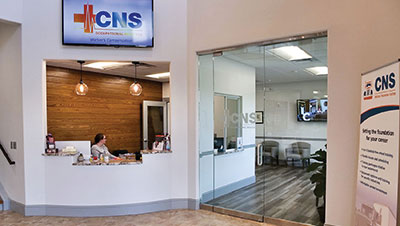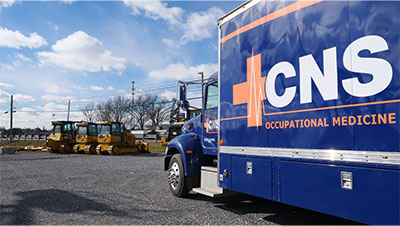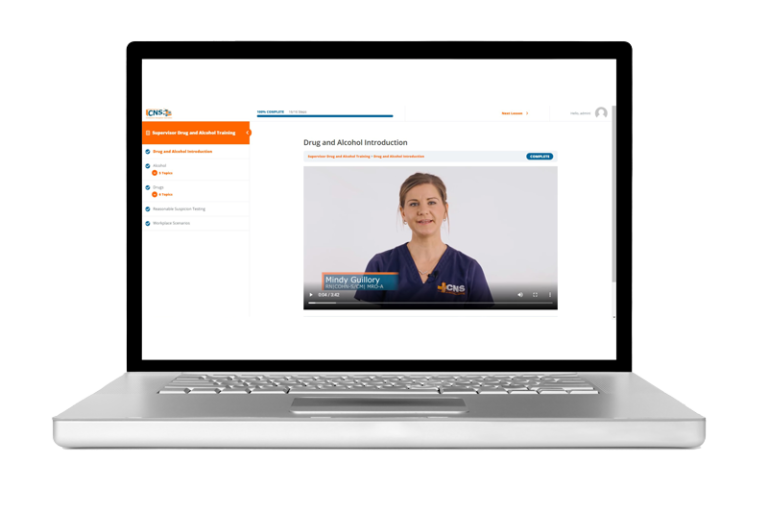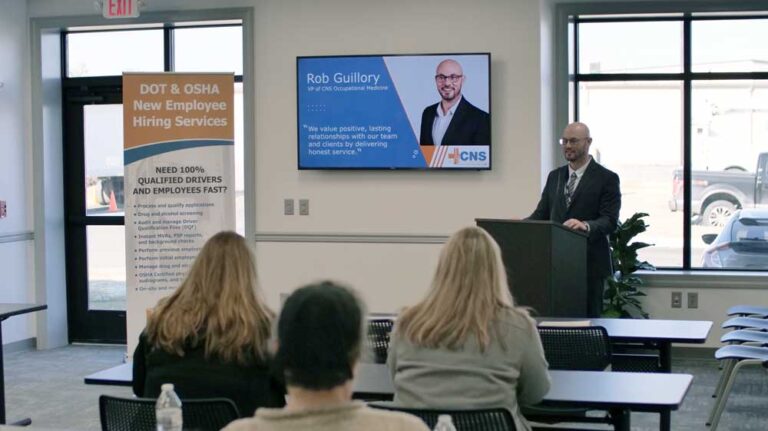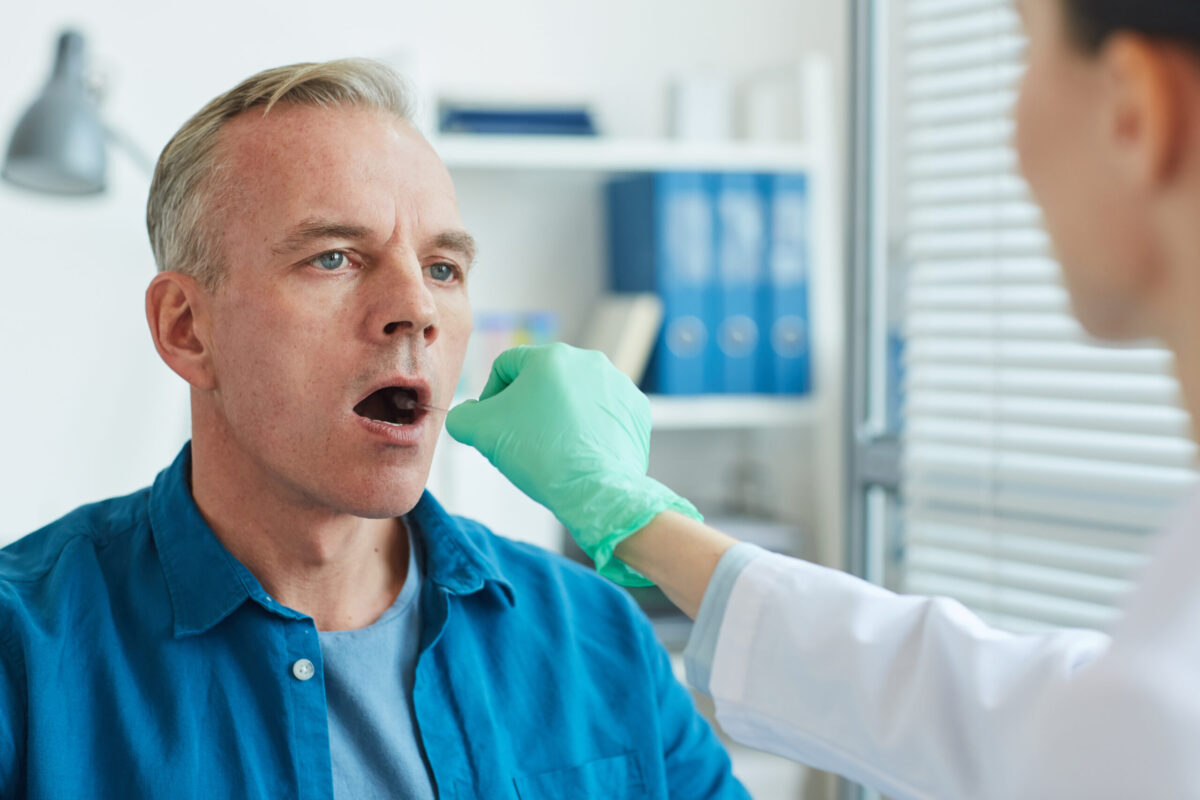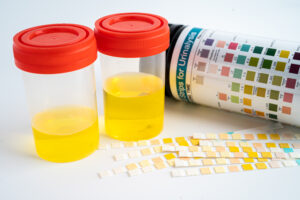While urine drug testing has been the industry standard for decades, oral saliva testing will soon become a new option as a federal drug testing method, likely in 2023.
But what is oral saliva testing, when is it a good option to use this method, and why should I care?
Oral Saliva Testing
Oral saliva tests are easy to perform and are typically conducted at the place of employment, at a scene of an accident, or at a collection site. The entire process takes just 15 minutes.
- First, there a 10-minute direct observation period during which the donor will not eat, drink, or smoke to prevent dilution techniques. This is the amount of time your saliva cycles new saliva.
- Collector will then place the collection pad in the donor’s cheek and gum for at least two minutes
- Once well-saturated, the swab is placed in a vial, the handle of the collection device is snapped off at the rim of the vial, and the vial is sealed
- Lastly, the donor initials the seal
Oral Testing Detects Recent Drug Use
When drugs enter the body, they get broken down and release the parent compound first and degrades into smaller metabolites later.
Oral testing is like blood testing because it tests for the “parent compound” of a drug, a better measure of recent drug use, while urine testing detects the smaller metabolites that take time to pass through our bodies.
This is why urine testing can detect drug use from 2-7 days and oral testing from a few hours to 2 days.
This makes oral testing the best method for both reasonable suspicion and post-accident testing since you want to know if drugs may have played a factor in recent events, like a vehicle accident or workplace injury.
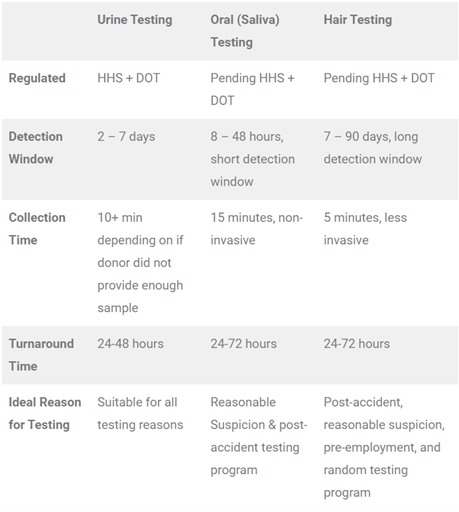
Oral Testing Is Non-Invasive
Urine testing is considered an invasive testing method because there can be issues around the donor’s gender, direct observation, and privacy.
However, oral saliva testing does not have these same sensitivity issues.
When it comes to an observed drug test, instead of making sure there is a male or female collection staff watching the urine stream into a cup, a mouth swab can be done anywhere with any collection staff.
By using saliva, the collection can be done at any site (even without a bathroom) and under direct supervision which reduces the chances of tampering the sample.
Types of Drugs Detected With Oral Testing
Federal drug tests require testing of 5 main drugs: Marijuana, Cocaine, PCP, Amphetamines, and Opiates (including synthetic-opiates like hydrocodone and oxycodone). Non-DOT drug tests can include drug panels of up to 12-14 drugs. These can include:
- Alcohol
- Amphetamine
- Barbiturates
- Benzodiazepines
- Buprenorphine
- Cocaine
- Cotinine (nicotine)
- K2
- Marijuana (THC)
- Methamphetamine
- Opiates (codeine, morphine, 6-acetylmorphine)
- Phencyclidine (PCP)
- Propoxyphene
A negative screen result can take less than 24 hours while a non-negative result can take 24-72 hours.
CNS Occupational Medicine can help with oral testing and customized policy development
Drug testing policies can be complicated and should consider:
- Purpose of the Policy
- Specimen Types
- Testing Procedures
- Prescription Drug Disclosure
- Federal Regulations (DOT)
- State Drug Testing Laws and Marijuana Laws
- Workers’ Compensation
- ADA
- Prohibited Conduct
- Consequences
Our Occupational Medicine Team can also develop a custom workplace safety plan for your company. You may need a combination of services like physicals, COVID-19 testing, and drug testing, and you may also need these services performed on-site.
For more information, contact us at 800.551.9816 or info@cnsoccmed.com.

